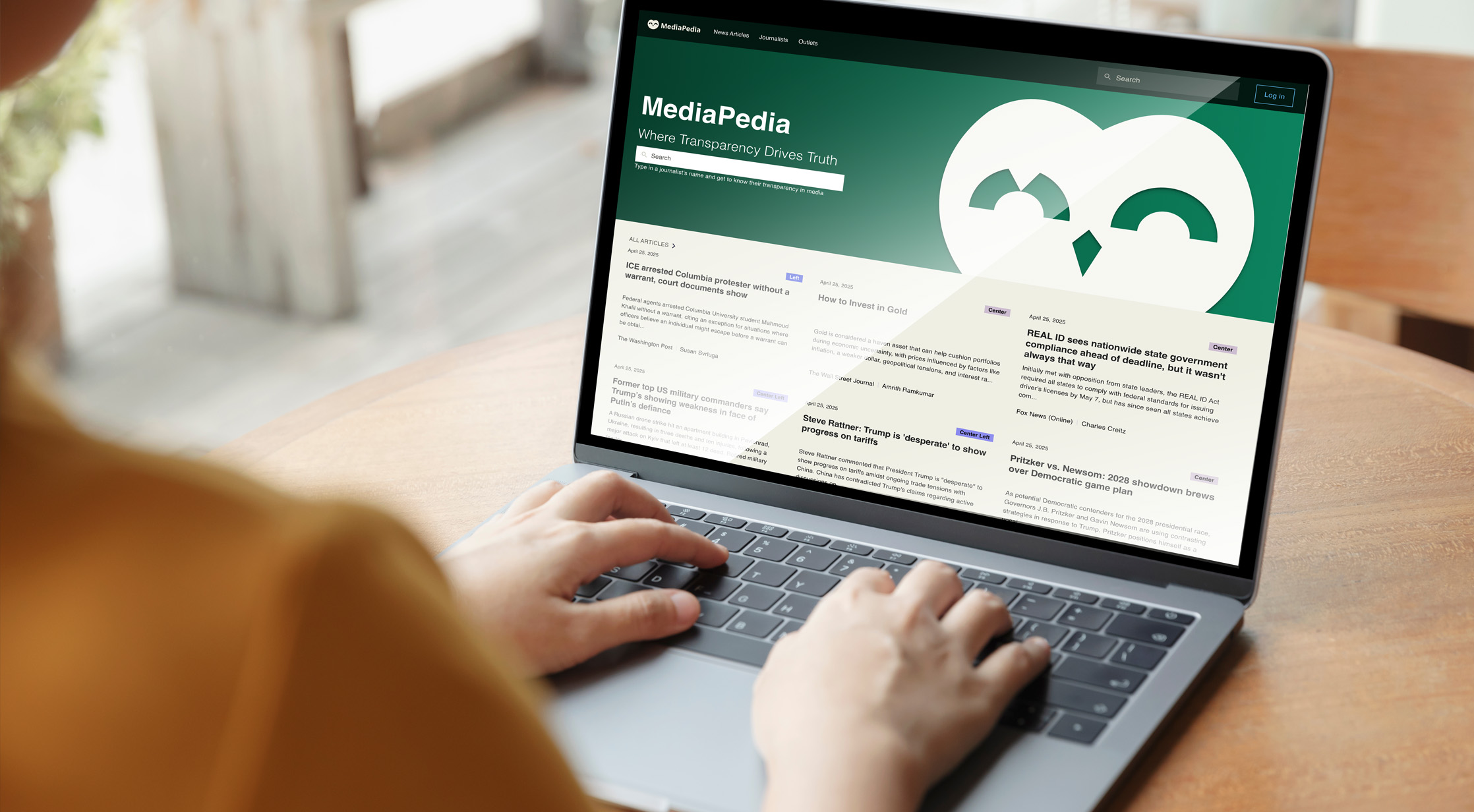
Advancing News Transparency with AI: How MediaPedia is Challenging Media Bias
About the Customer
MediaPedia, a project of American Independent Media, aims to become the go-to authority for bias ratings across American media. Referred to by some as the “IMDb of media,” it aims to catalog reporters, editors, publishers, and social influencers—providing clear, data-driven measures of each entity’s political leanings. Rather than avoiding the politically charged nature of news, MediaPedia confronts it head-on with a strategy rooted in artificial intelligence and neutral data analysis.The Challenge
MediaPedia established ambitious benchmarks for both excellence and speed. Kicking off the partnership in September, the initial Minimum Viable Product (MVP) needed to be operational by Inauguration Day—January 20th—setting the stage for subsequent phases throughout the following nine months. Reaching this deadline required a flexible development approach capable of scaling from processing a small pilot collection of articles to handling thousands daily.Meeting High Public Expectations
Operating in a charged political environment, many news-rating services have faced criticism for perceived bias. MediaPedia sought a reliable system that would reveal subtle slants without suggesting an allegiance to any particular side. Consistency, openness, and precision in identifying bias became a top priority.Handling Complex Data Flows
News comes in many forms, articles, broadcasts, podcasts, tweets, etc. The MVP had to automate ingestion from multiple sources, apply AI-based bias classification, and store results in a scalable database. Building a data pipeline flexible enough to handle the shift from text-based articles to audio and video content was essential for long-term success.
The Solution
MediaPedia partnered with Kanda to execute on this vision, choosing a cloud-native approach that emphasized scalability and continuous improvement. The project team combined architecture design, data science, and user interface development into an agile lifecycle aimed at releasing core functionality by the tight MVP deadline.Technology Stack Overview
- Infrastructure: Deployed on Microsoft Azure, utilizing microservices within containers that possess the ability to automatically scale during surges in incoming content.
- Backend Services: Developed using .NET, incorporating RESTful APIs and Azure Storage Queues to orchestrate data intake and AI-driven processing.
- Frontend Framework: Built with Next.js, resulting in a dynamic and contemporary interface for both public users and administrative reviewers.
- AI & Data Science: Utilized OpenAI GPT models, specifically refined using labeled datasets of news articles. Models underwent repeated training to integrate corrections and fresh labeling information.
AI-Driven Bias Analysis
The data science team created a system to parse and classify text from incoming articles. Early on, domain experts labeled a selection of articles so the AI could differentiate a broad spectrum of political biases, from very left to very right. By turning these categories into numeric scores, analysts tracked performance markers—such as mean absolute error—to progressively enhance the model’s accuracy.Process for each article:
- The text entered a queue and, when necessary, was divided into smaller sections.
- Named entity recognition identified key figures, policies, or events and evaluated the article’s sentiment toward them.
- A conclusive score, ranging from “very left” to “very right,” was assigned, accompanied by a confidence assessment and a concise summary.
- If reviewers spotted inconsistencies, they updated the system. These revisions were fed back into the training pipeline to refine future predictions.
Overcoming Challenges
Subjectivity in Bias Labels
MediaPedia’s core mission demanded both accuracy and consistency, yet real-world bias often overlaps with opinion or context. The team was able to identify edge cases and enhance the AI's decision-making process to reduce ambiguity between, say, "slightly left" and "center", by compiling multiple human classifications for each sample article.Scaling for Diverse Media Formats
While the MVP primarily handled text-based articles, the vision extended to social media, podcasts, and video. When feasible, the architecture transformed each medium into a single textual format in order to maintain flexibility. This includes APIs for Twitter or RSS feed ingestion and speech-to-text conversion for audio or video content.Earning Public Trust
The system’s credibility hinged on clear, transparent processes. MediaPedia included features such as a dispute workflow, allowing journalists or outlets to flag inaccuracies. Over time, these corrections improved the AI’s reliability and bolstered the platform’s reputation as a neutral referee in a politically fraught space.The Results
The MVP launched on schedule, providing a functional bias-rating platform that processed thousands of articles in its first few weeks. Users could examine media organizations and specific journalists, with a data-driven bias score displayed for each profile. Because the AI handled routine classifications, admin users reported spending less time on labor-intensive labeling. The labeled dataset grew more quickly as efforts were redirected toward confirming complex edge cases. The system demonstrated strong scalability, with the Azure-based infrastructure handling surges of content during major news events without downtime.
Looking Ahead
MediaPedia’s roadmap extends well beyond text articles, aiming to incorporate social posts, video transcripts, and entire podcast libraries into the bias-rating pipeline. Additionally, the team is improving interfaces that allow outlets and journalists to claim their profiles and contest or interpret their ratings. MediaPedia aims to establish a new standard for transparency in media research by continuously enhancing its analytics and accelerating feedback loops. Ultimately, the platform hopes to provide a long term perspective of how bias changes over time, in addition to a snapshot of bias for any given story. MediaPedia's data-driven approach promises a deeper layer of confidence and clarity for everyone who depends on reliable information to guide their perspective on global events in an era of increased scrutiny of news sources.
Technology Stack: